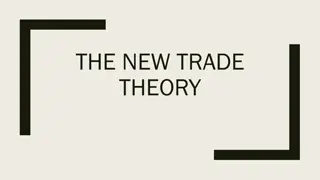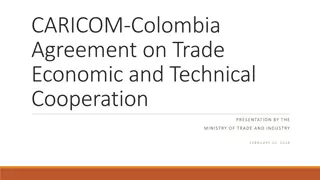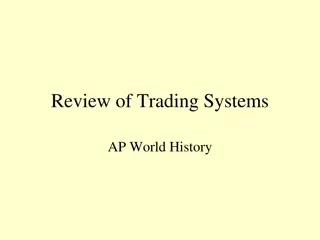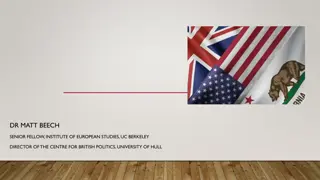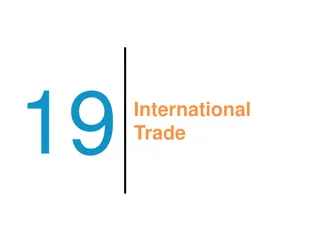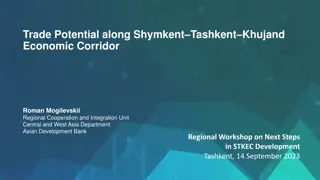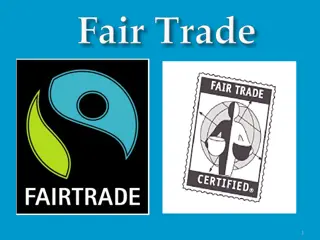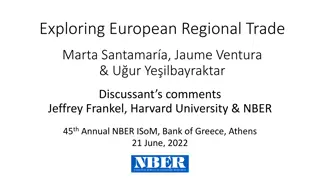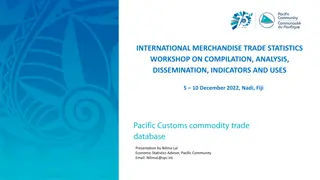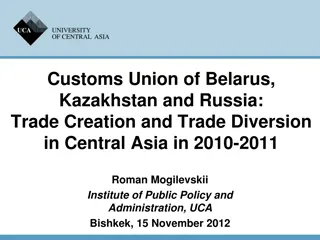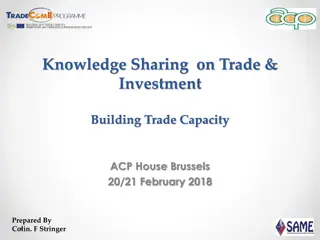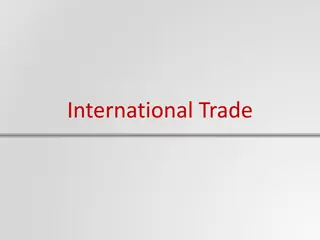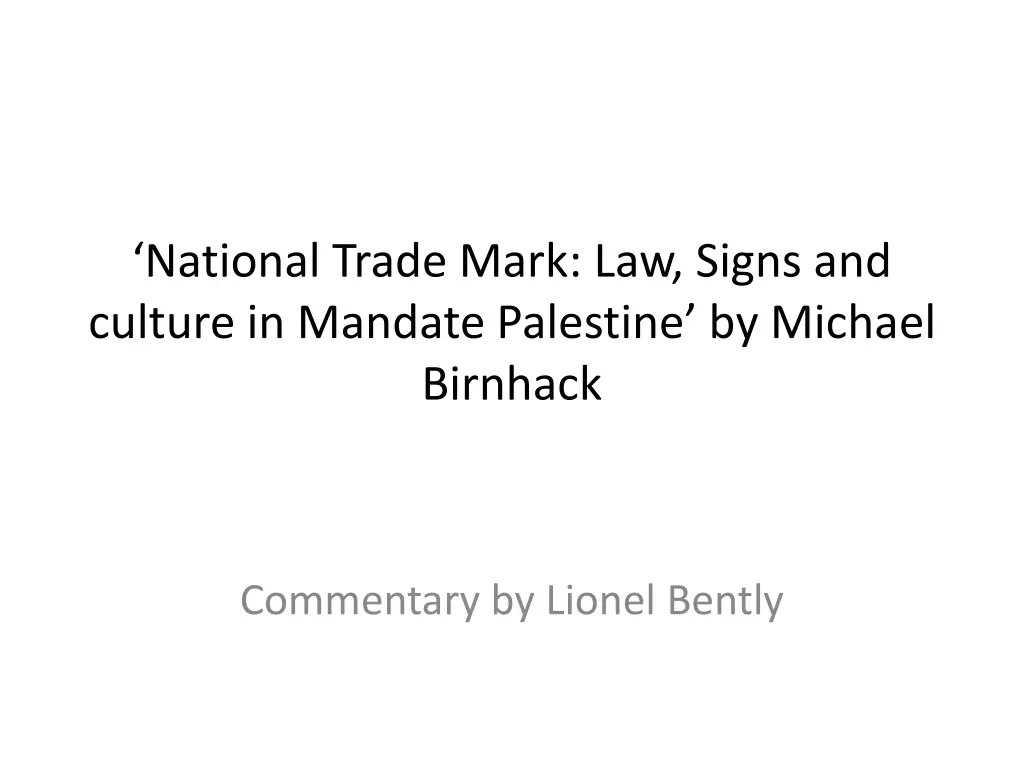
Trademark Law and Culture in Mandate Palestine: Historical Insights
Explore the historical development and impact of trademark law in Mandate Palestine from 1917 to 1948, delving into legal frameworks, cultural implications, and the role of British influence. Discover how trademark systems evolved, influenced by international conventions and colonial interests.
Download Presentation

Please find below an Image/Link to download the presentation.
The content on the website is provided AS IS for your information and personal use only. It may not be sold, licensed, or shared on other websites without obtaining consent from the author. If you encounter any issues during the download, it is possible that the publisher has removed the file from their server.
You are allowed to download the files provided on this website for personal or commercial use, subject to the condition that they are used lawfully. All files are the property of their respective owners.
The content on the website is provided AS IS for your information and personal use only. It may not be sold, licensed, or shared on other websites without obtaining consent from the author.
E N D
Presentation Transcript
National Trade Mark: Law, Signs and culture in Mandate Palestine by Michael Birnhack Commentary by Lionel Bently
General Mandate Palestine 1917-1948 Balfour Declaration (1917) League of Nations Mandate 1922: home for Jewish people/to facilitate self-government Governed by High Commissioner (initially Herbert Samuel) with an Advisory Council Population: 750,00 to 1,750,00. Arabic component initially 88%. Jewish population increased from 11 to 31% (550,000). Arab Revolt 1936-9
Three Parts Legal History: Adoption of TM Law, interpretation, amendment Trademark Data: Who Applied? For what? Cultural Meaning: treatment in TM office, and more general observations
Legal History Trademarks Ordinance 1921 and 1938, based on Trade Marks Act 1905 (GB) Merchandise Marks Ordinance 1929, based on Nigerian MMO, and on MMA 1887 Existing Ottoman Law did not comply with Paris (1911 revision) ( the excuse ) The need for a TM registration system was taken for granted a colonial legal transplant , but with variations Examines case-law, esp Supreme Court, which followed English precedents Judicial emphasis on consumers
Legal History the British acted first and foremost so to promote the interests of the colonizer ie of foreign, mainly British traders who exported their products to Palestine Is there any evidence of pressure from British businesses on BT/CO, and thus pressure on HC of MP? Does a TM system promote interests ? How? Cf India (no TM registration system until 1940) Other explanations: international zeitgeist (Dimou); nation building for MP
The Mandate, art 19 The Mandatory shall adhere on behalf of the Administration of Palestine to any general international conventions already existing, or which may be concluded hereafter with the approval of the League of Nations, respecting literary, artistic or industrial property.
Empirical Analysis MB reconstructed TM register from official gazette trademark registries provide us with rather accurate data about the use of the law in the field. Do they? Would we be comfortable with such an observation today? Mirrors population growth, especially middle class of third wave (1930s), and geopolitical events (uprising, war)
Critical Cultural History Examines the trademarks registered Aim to locate the big picture, the cultural trademark mosaic self aware uses signal emergence of brands : LB dubious. Finds the cultural content was fuelled with issues of nationality Arab-owned marks contained images (87%), compared to Jewish owner (55%) Categorises content (religious symbols, animals etc)
Arab Chamber of Commerce/Sup Moslem Council v Hannoch (1938) Applicant: Moshe Hannoch from Tel Aviv For soap Omar Mosque Pure Jerusalem Soap Was it injurious to public order or morality? Registrar did not think so, but application was withdrawn




